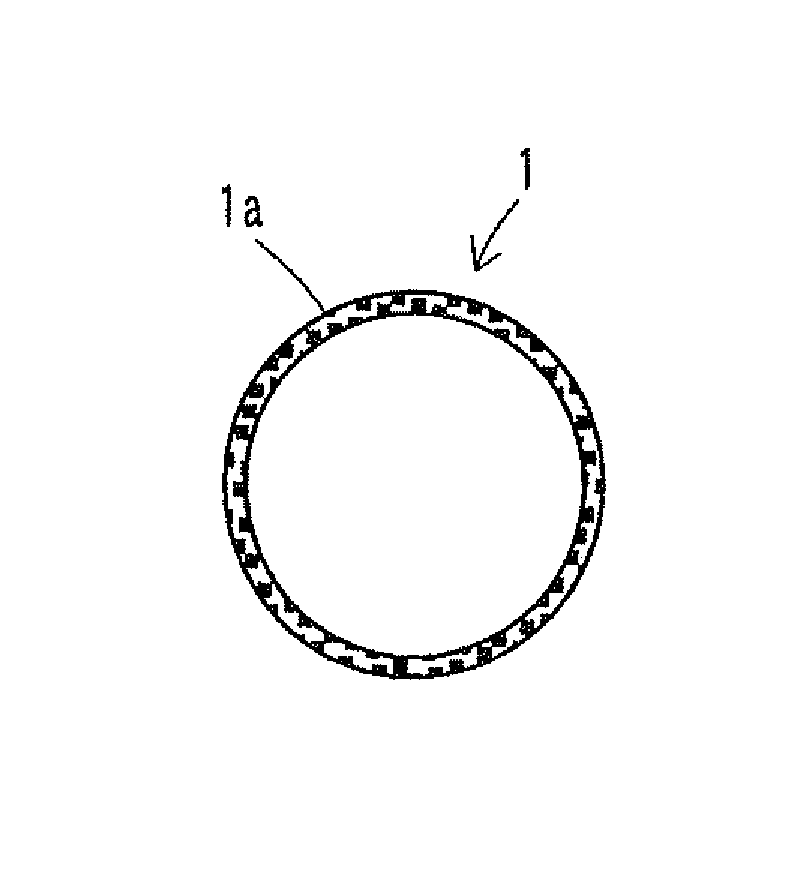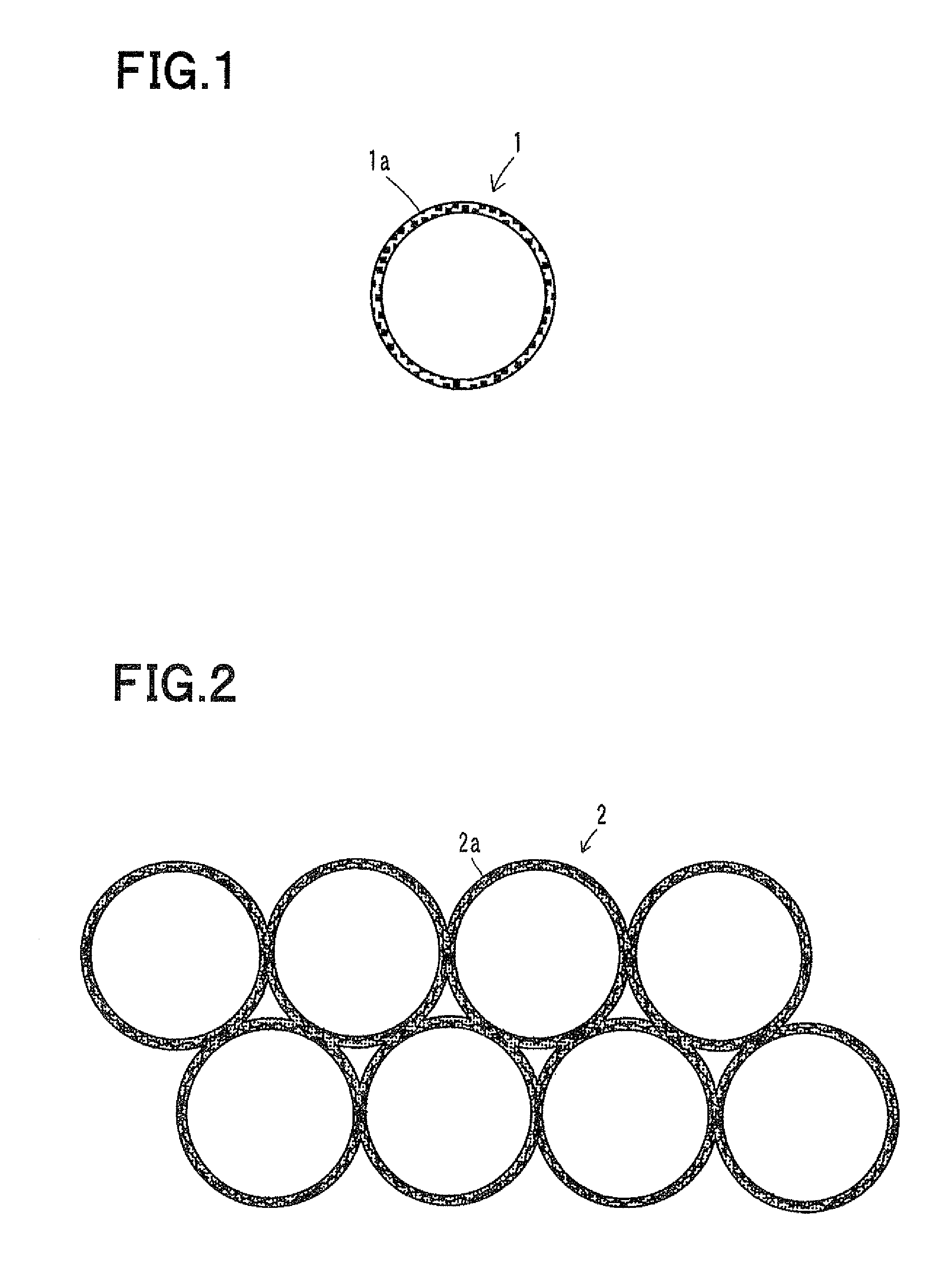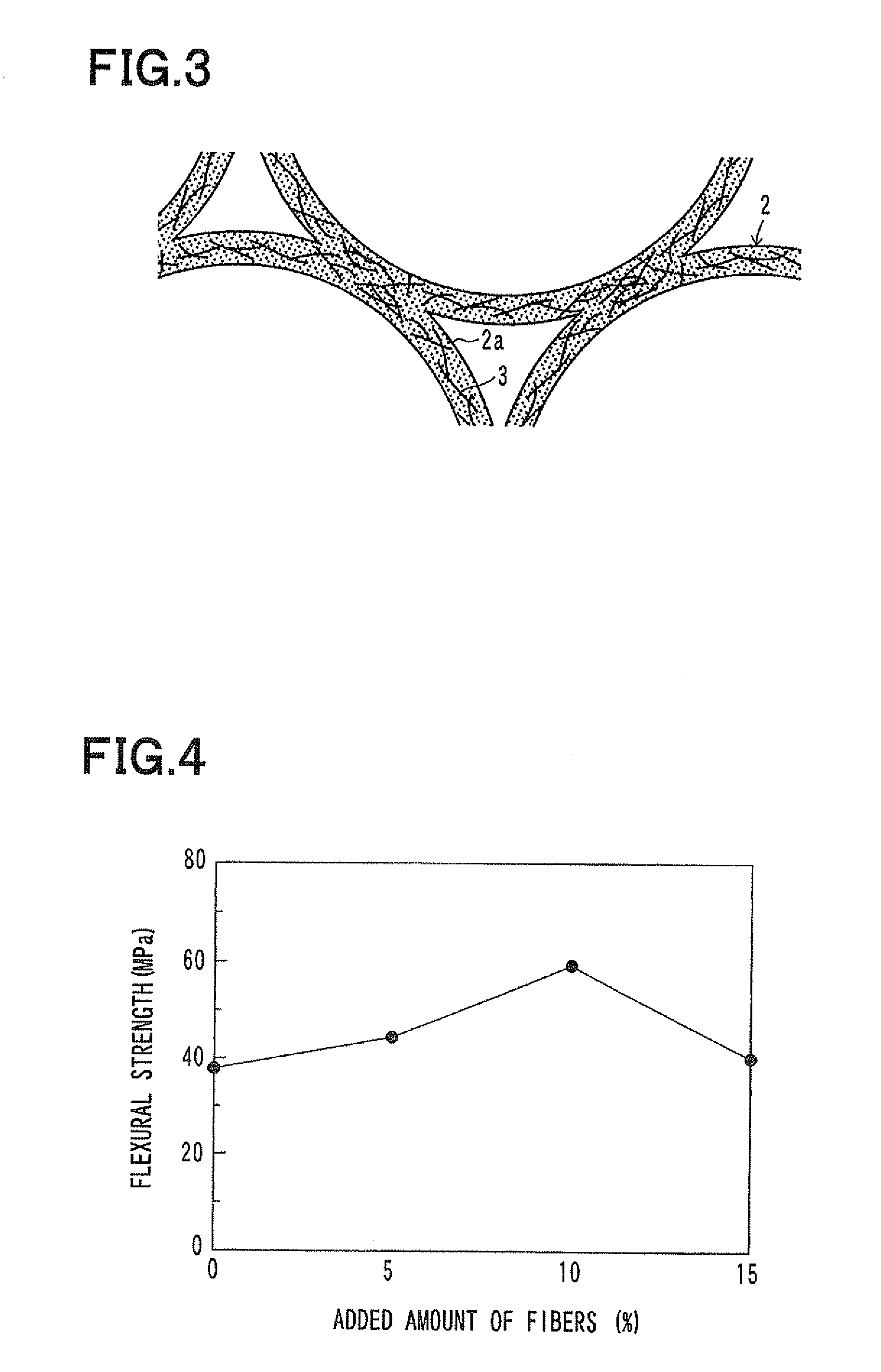Solidification method of ceramic powder and solidified ceramics
a technology of solidified ceramics and ceramic powder, which is applied in the field of solidified ceramic powder and ceramic solidification, can solve the problems of significant changes in the solubility of ceramics in hard control of solidification, and cracking of the solidified ceramic body
- Summary
- Abstract
- Description
- Claims
- Application Information
AI Technical Summary
Benefits of technology
Problems solved by technology
Method used
Image
Examples
example 1
[0034]In an example 1, metakaolin (having 1 μm of mean particle size) which is obtained by sintering and dehydrating kaolinite is used, and potassium hydroxide water solution is used as the alkali water solution. Then, a carbon nanotube reinforcement solidified metakaolin body is fabricated through each of the following processes.
[0035]Activated metakaolin powder is obtained by placing 200 grams of the above-descried metakaolin in a magnetic pot having a volume of 1000 mL, putting zirconia balls (having 10 φ of diameter) into the magnetic pot, and rotating the magnet pot with a ball mill device for 100 hours.
[0036]Carbon nanotubes (multi-walled, 10 nmφ, 10 μm of fiber length, 100 of aspect ratio) are added to the activated metakaolin powder to achieve 5 weight percent and mixed with the activated metakaolin powder by using the mixing device.
[0037]50 mass percent of potassium hydroxide solution is added to the mixture obtained in the mixing process to achieve 65 mass percent of the p...
example 2
[0038]In an example 2, the mixing proportion of the carbon nanotubes is set to 10 weight percent. The other conditions for fabricating the solidified metakaolin body are the same with those in the example 1 and are not described here.
example 3
[0039]In an example 3, the mixing proportion of the carbon nanotubes is set to 15 weight percent. The other conditions for fabricating the solidified metakaolin body are the same with those in the example 1 and are not described here.
PUM
| Property | Measurement | Unit |
|---|---|---|
| mean particle size | aaaaa | aaaaa |
| volume | aaaaa | aaaaa |
| length | aaaaa | aaaaa |
Abstract
Description
Claims
Application Information
 Login to View More
Login to View More - R&D
- Intellectual Property
- Life Sciences
- Materials
- Tech Scout
- Unparalleled Data Quality
- Higher Quality Content
- 60% Fewer Hallucinations
Browse by: Latest US Patents, China's latest patents, Technical Efficacy Thesaurus, Application Domain, Technology Topic, Popular Technical Reports.
© 2025 PatSnap. All rights reserved.Legal|Privacy policy|Modern Slavery Act Transparency Statement|Sitemap|About US| Contact US: help@patsnap.com



